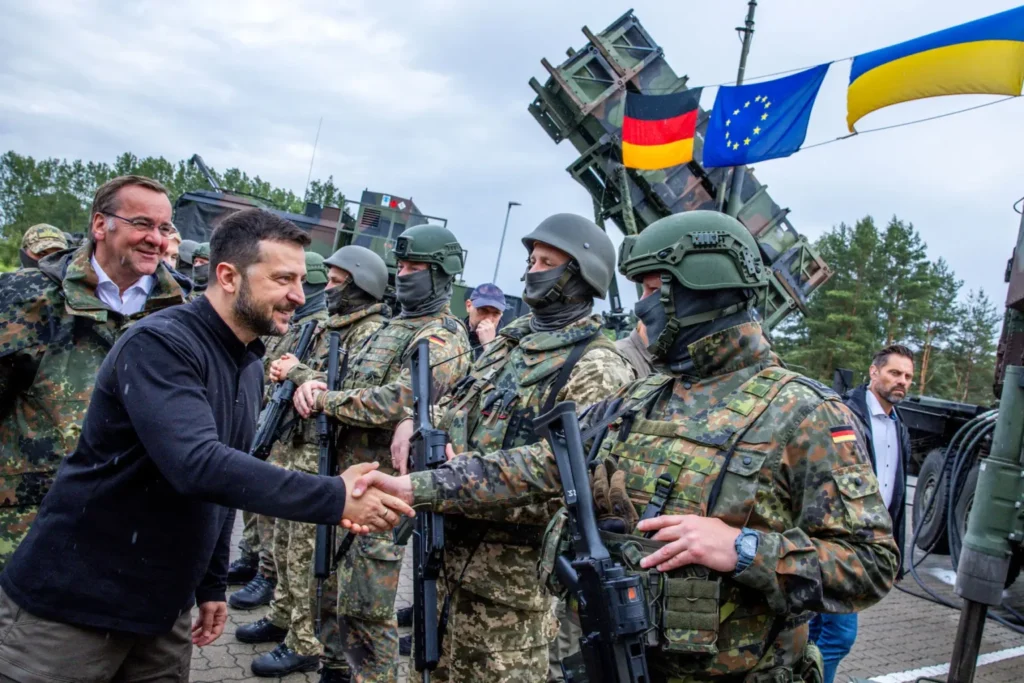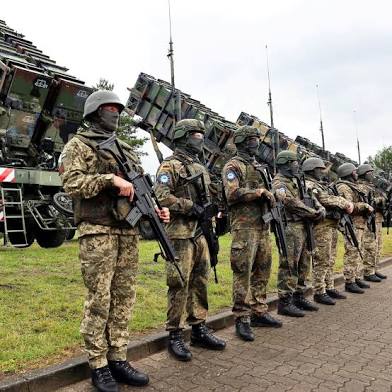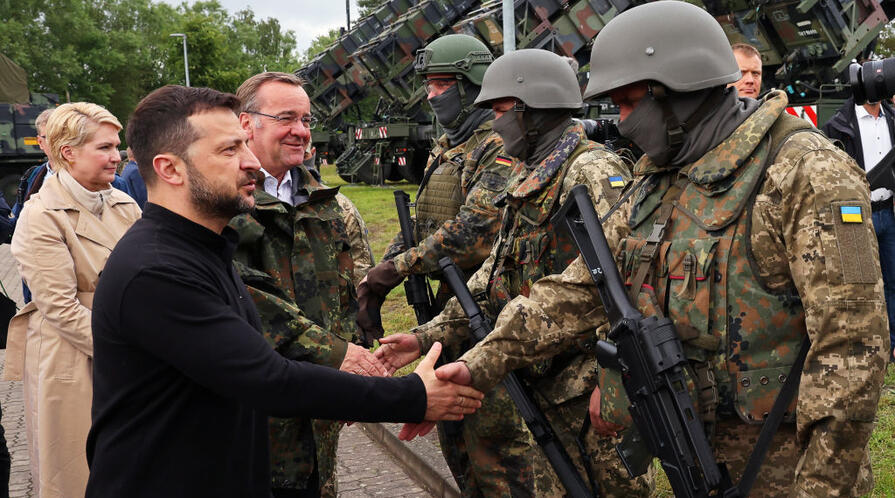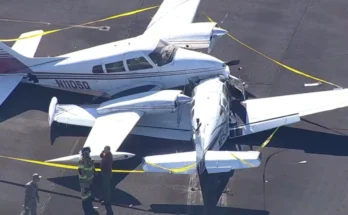
MECKLENBURG, GERMANY – JUNE 11: Volodymyr Zelensky, President of Ukraine, (2L) and Boris Pistorius, (3L) Federal Minister of Defense are seen visiting the training of Ukrainian soldiers on the Patriot anti-aircraft missile system at a military training ground on June 11, 2024 in Mecklenburg, Germany. The international reconstruction conference for Ukraine will take place on 11 and 12 June Zelensky is in Berlin to also attend the Ukrainian Recovery Conference. Germany is the second biggest donor of military aid to Ukraine. (Photo by Jens Büttner – Pool/Getty Images)
February 24 marks the third anniversary of Russia’s all-out assault on Ukraine. The Kremlin failed in its attempt to achieve a quick victory, and the war has become one of attrition, with neither side making dramatic breakthroughs on the battlefield. Russia had momentum in 2024 but recorded only modest territorial gains and failed to evict Ukrainian forces from Russia’s Kursk region.
President Donald Trump’s bid to broker an end to the fighting has been marked by early missteps. Reaching a durable settlement will require that both sides, particularly the Russians, move off of deeply entrenched positions. Absent a well-conceived strategy for brokering an agreement, the president’s mediation attempt will fail, and the war will continue. What happens matters to the United States. Should the Kremlin win—either on the battlefield or as the result of a shoddy deal—Russia will pose an even larger threat to Europe and to key American interests.

A long and costly conflict
The Russia-Ukraine war, the bloodiest in Europe since World War II, began 11 years ago. Following Ukraine’s Maidan Revolution, Russian forces seized Crimea in early 2014. Russia subsequently became involved in fighting in the Donbas, which left Russian and Russian proxy forces occupying parts of Donetsk and Luhansk in eastern Ukraine.
Russia’s multi-vector invasion on February 24, 2022, appeared to have two objectives: quickly take Kyiv, and occupy the eastern one-half to two-thirds of Ukraine. To the surprise of virtually all, Ukrainian forces stopped the Russian army short of the capital, drove it out of the north, and later launched successful counteroffensives in the east and south. The Ukrainians
launched further counteroffensives in 2023, but equipment limitations and extensive Russian defensive fortifications stymied those operations. By early 2024, the war had become one of attrition.
Ukraine’s military, which musters about 900,000 compared to 1.3 million for Russia, has struggled with manpower issues, though it is trying new ways to attract recruits. As they have since 2022, the Ukrainians remain critically dependent on Western weapons and munitions. The Trump administration has not sought new congressional funding for military assistance for Kyiv, which means the flow of U.S. weapons at some point will cease, as it did when funding ran out in late 2023 (that hurt Ukraine).. Europe’s defense industrial base would have a difficult time meeting Ukrainian needs on its own.
If one side had momentum in 2024, it was the Russians, but they secured only limited territorial gains. At the beginning of 2025, the Russian military controlled about 18% of Ukraine’s territory. It added over the course of 2024, but that amounts to less than 1% of Ukraine. The Russian military has failed to reclaim part of Russia’s Kursk region that the Ukrainian army seized in August.
The Russians have paid an enormous costover the past three years, by one estimate suffering 172,000 dead and 611,000 wounded, many of them severely. (While the Ukrainians have also suffered heavy casualties, they are believed to be significantly less.) The Russians have also suffered huge equipment losses, including some 14,000 main battle tanks and armored vehicles.



